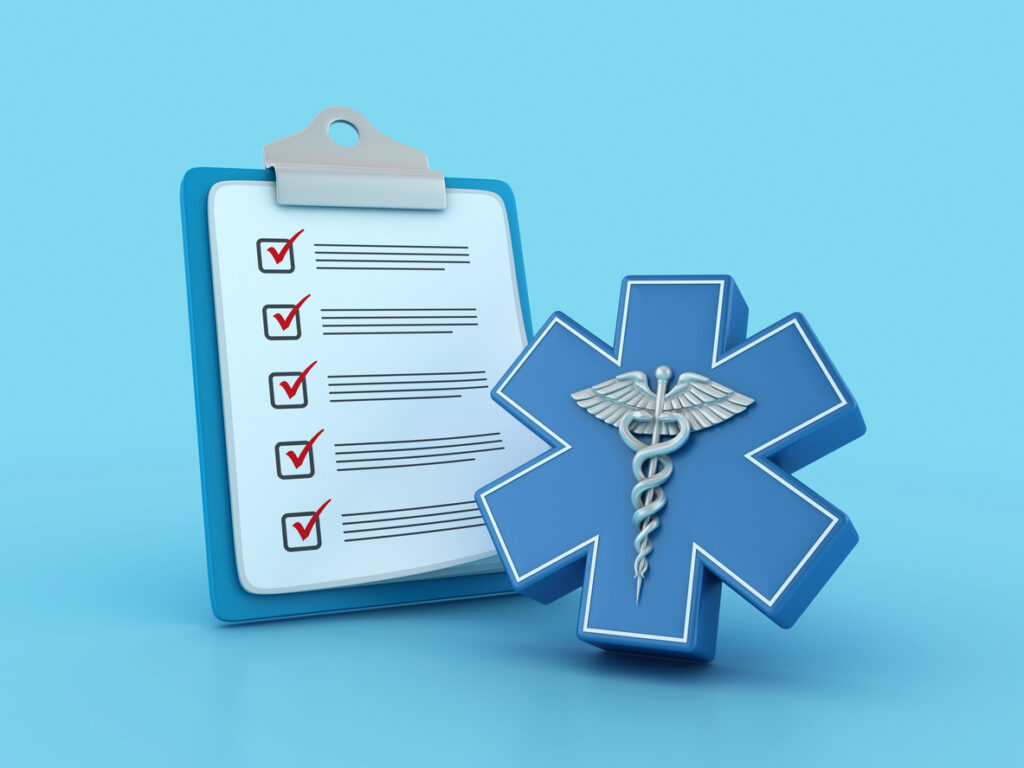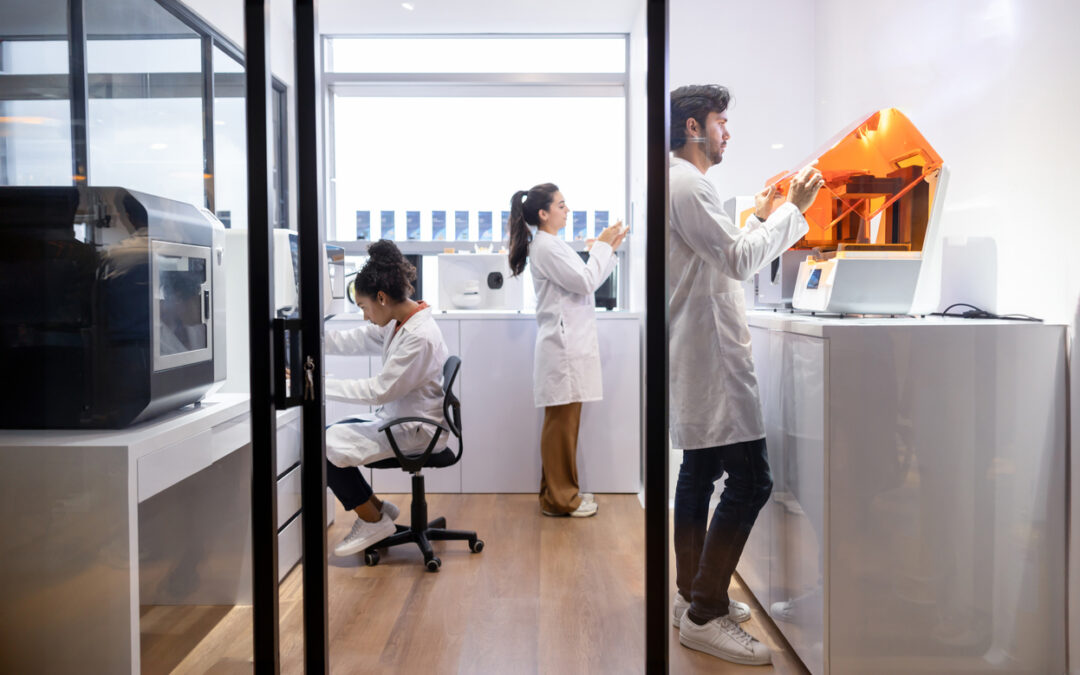Delivering Precision, Personalization, and Patient-Centered Care
3D printing, also known as additive manufacturing, has become one of the most transformative forces in modern healthcare. Its ability to create patient-specific devices, improve treatment efficiency, and accelerate innovation makes it a vital tool for hospitals, research labs, and private practices alike. From affordable prosthetics and dental implants to cutting-edge organ bio-printing, 3D printing is revolutionizing personalized, efficient, and patient-centered care.
However, as healthcare providers increasingly look to bring 3D printing in-house, the question is no longer if you should adopt the technology, but which medical 3D printer is right for your needs.
Below, we’ll explore the transformative applications of 3D printing in medicine—and more importantly, the key factors to consider when selecting a medical healthcare 3D printer.
Understanding the Technology
At its core, 3D printing creates three-dimensional objects by layering materials based on digital blueprints. In healthcare, this allows for the production of highly complex, patient-specific structures—from surgical models and dental appliances to custom prosthetics and even bioprinted tissue.
Medical 3D printers vary significantly in:
- Printing Technology (FDM, SLA, SLS, DLP, and bioprinting-specific methods)
- Materials Compatibility (plastics, resins, metals, ceramics, bio-inks)
- Resolution & Accuracy (critical for precise anatomical models)
- Regulatory Compliance (FDA-cleared or ISO-certified devices for medical use)
What to Look for When Purchasing a Medical 3D Printer
1. Regulatory and Clinical Compliance
- Check if the printer or its materials have FDA clearance or ISO 13485 certification for medical device manufacturing.
- Ensure it meets biocompatibility standards for implants, surgical guides, or patient-contact devices.
- If printing for in-body use, verify sterilization compatibility.
2. Material Versatility
- Determine if it supports the materials you need:
- Biocompatible resins for surgical guides
- High-strength polymers for prosthetics
- Ceramics or metals for implants
- Bio-inks for tissue engineering
- Confirm availability of medically approved consumables.
3. Print Accuracy & Resolution
- Look for micron-level resolution for surgical models and dental appliances.
- Consistency in repeat prints is crucial for predictable clinical outcomes.
4. Build Volume
- Choose a printer that can handle the size of your intended applications:
- Small dental crowns require less space.
- Full anatomical models or large prosthetics demand a bigger build volume.
- Small dental crowns require less space.
5. Speed & Workflow Integration
- High print speed can reduce turnaround time for urgent cases.
- Integration with medical imaging software (DICOM, STL exports) is key for creating models directly from MRI/CT scans.
6. Ease of Use & Training
- Intuitive interfaces and automated calibration can save staff hours.
- Check if the manufacturer offers medical-specific training and technical support.
7. Total Cost of Ownership
- Factor in not just the printer price but also:
- Materials and consumables
- Maintenance and service contracts
- Software licensing fees
- Materials and consumables

Medical 3D Printer Buyer’s Checklist
| Category | Key Questions | What to Look For |
| Regulatory Compliance | Is it cleared for medical use? | FDA-cleared, ISO 13485 certified, ASTM standards compliance |
| Biocompatibility | Can materials be safely used in patient contact or implantation? | Certified biocompatible resins, polymers, or bio-inks |
| Supported Technologies | Which printing process does it use? | SLA, DLP, SLS, FDM, bioprinting |
| Material Compatibility | Does it print the materials you need? | Dental resin, surgical resin, titanium, PEEK, PLA, bio-inks |
| Print Resolution & Accuracy | Is it precise enough for surgical/dental applications? | 25–100 microns |
| Build Volume | Can it handle the size of your models? | Example: 200 × 200 × 300 mm |
| Speed | How quickly can it produce a part? | Example: 50 mm/hour |
| Workflow Integration | Does it work with medical imaging formats? | Direct import from DICOM/CT/MRI scans |
| Ease of Use | Is it staff-friendly? | Touchscreen UI, automated calibration, guided maintenance |
| Software & Licensing | Is software included and HIPAA-compliant? | Proprietary or open-source, subscription costs |
| Post-Processing Requirements | What extra steps are needed after printing? | Curing, sterilization, support removal tools included |
| Service & Support | Is training and technical help available? | 24/7 tech support, on-site training |
| Total Cost of Ownership | Beyond the printer price, what are the ongoing costs? | Material costs, maintenance fees, software subscriptions |
| Warranty | What’s covered and for how long? | 1–3 years parts & labor |
Transformative Medical Applications
Custom Prosthetics
3D printing enables affordable, rapid, and customizable prosthetics.
When choosing a printer for prosthetics:
- Opt for durable material compatibility.
- Ensure fast production speed to reduce patient wait times.
Bio-Printing
In research and advanced clinical settings, bioprinting is paving the way for functional tissue creation.
Key considerations:
- Sterile, enclosed environments for cell viability.
- Precision deposition for layered tissue construction.
Dental and Orthodontics
From crowns to aligners, dental 3D printing demands extreme accuracy.
Printer requirements:
- High-resolution output (25–50 microns)
- Dental-grade resins approved for patient use
Surgical Planning Models
Patient-specific anatomical models improve surgical accuracy.
What to check:
- Compatibility with medical imaging files.
- Ability to produce multi-material or color prints for anatomical clarity.
Industry Benefits Beyond the Patient
- On-Demand Manufacturing: Reduce supply chain dependency.
- Reduced Waste: Print only what you need, when you need it.
- Faster Innovation Cycles: Prototype and test new devices rapidly.
The Bottom Line
A medical healthcare 3D printer is much more than a piece of equipment—it’s a strategic investment that can elevate patient care, boost operational efficiency, and spark innovation across your facility.
Companies like Nota3D exemplify this by offering unified, point-of-care solutions—including both printers and software like DICOM‑to‑Print—that are engineered for seamless integration into clinical workflows, ensuring reliability and regulatory readiness.Their EXT 220 MED platform, for instance, enables high‑performance printing with medical‑grade polymers such as PEEK within clean‑room environments—helping healthcare providers pass rigorous production qualifications and deliver patient‑specific implants with superior precision.
By focusing on factors such as regulatory compliance, biocompatible materials, print accuracy, workflow integration, and total cost of ownership, you’ll not only support clinical excellence but also secure a strong return on your investment. The future of medicine isn’t just digital—it’s three-dimensional. The right printer—and a trusted partner like Nota3D—will help you get there. For more information, please contact us or visit our website.
